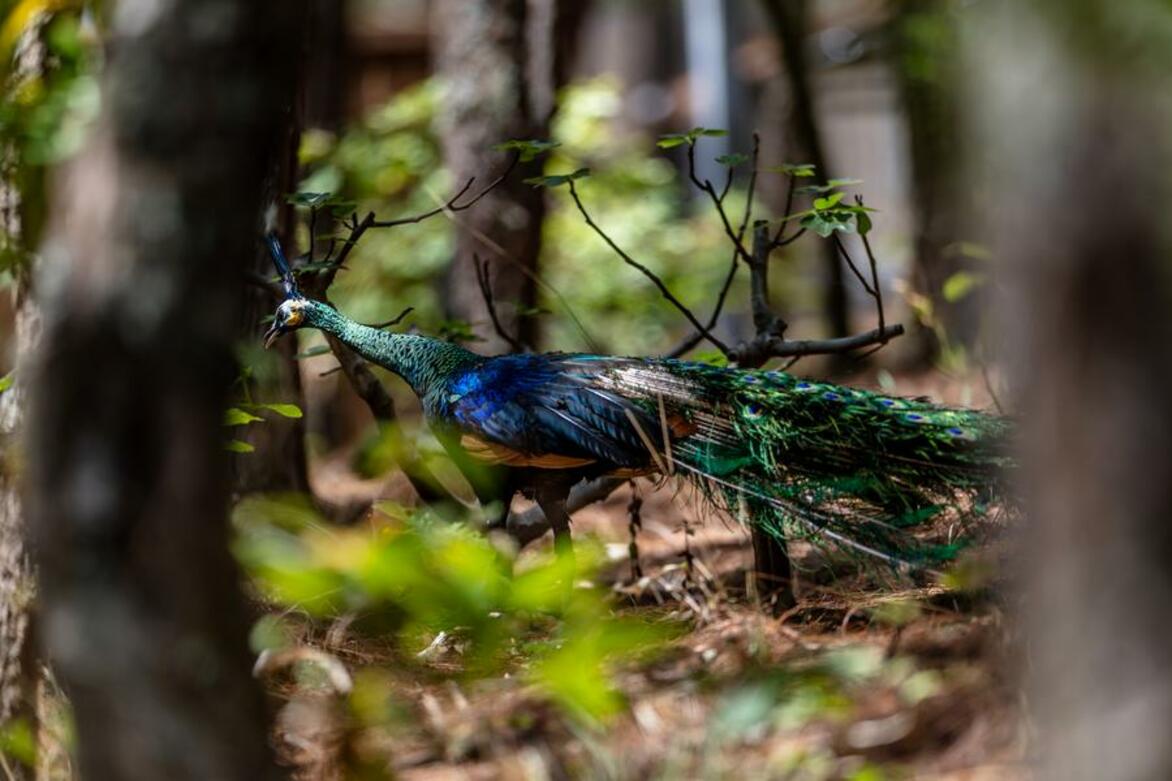Captive-bred green peafowls naturally reproduce in China
Xinhua
23 May 2025

KUNMING, May 23 (Xinhua) -- Four green peafowl chicks were recently hatched naturally in a wild training base in southwest China's Yunnan Province, marking the first successful natural breeding of the captive-bred species in a simulated wild environment and major progress in the country's rewilding efforts for the rare birds.
The young birds were discovered in mid-May via camera surveillance at the training base located at the Weishan Qinghua green peafowl provincial nature reserve in the Bai Autonomous Prefecture of Dali.
The base was co-founded by the nature reserve, the Kunming Institute of Zoology (KIZ) under the Chinese Academy of Sciences, and the Yunnan Forest Nature Center (YFNC), with a focus on wild training of captive-bred green peafowls.
Currently, 11 birds are receiving wild training at the base.
Thursday marks International Day for Biological Diversity.
Yang Jiawei, an official at the reserve, said captive-bred green peafowls are trained in simulated wild conditions to master survival skills like foraging, predator avoidance and reproduction before they are released into the wild.
"Naturally hatched chicks adapt better in the wild, increasing the release success rates," Yang said.
He added that, in the next step, the base will assess the peafowls' survival skills and release those qualified into the wild with trackers for monitoring, providing technical support for China's conservation efforts.
Lu Lin, who is in charge of wildlife rescue and breeding at the YFNC, said that in 2024, the center in the provincial capital Kunming successfully bred 48 chicks, with the hatching rate surging to 73.85 percent, up from 15 percent three years prior.
As of Thursday, 12 chicks have hatched from 68 eggs laid this year, with more expected soon. The entire hatching process will be completed within two months.
The green peafowl, China's only native peafowl species, is classified as "endangered" on the IUCN Red List, with a higher extinction risk than giant pandas.
With the continuous ecological conservation efforts in China, endangered wild animal species, including the green peafowl, have seen a rise in their populations.
In Yunnan, multiple nature reserves have been established in green peafowl habitats, with 48.1 million yuan (about 6.7 million U.S. dollars) spent on conservation projects like population monitoring and habitat improvement as of 2024, said Li Peng, an official in charge of wildlife protection from the provincial forestry and grassland bureau.
Thanks to these efforts, the population of wild green peafowls has risen from less than 500 in 2016 to about 850 today.
